Every stone a story
Nov. 10th, 2019 08:09 pmFor the last two lessons, the Chinese brush painting teacher had us working on looking at random ink splotches applied via crumpled paper and looking through them to see rocks, which we would then bring up out of the noise via judicious application of ink washes. I found this, er, difficult, and produced a lot of cubist rocks with nonsense geometry (but, alas, not in an interesting deliberate way).
This time, instead of starting with nearly random ink, she taught us techniques that were more like applying random distortions to the ink you meant to put down. It would still do what you wanted ... very approximately.
I loved it. It was like I'd been hiking with a heavy pack for the past two lessons, and now finally I'd gotten to the campsite and had taken it off and was walking unencumbered. Ink only wandering about the page semi-randomly felt almost too easy.
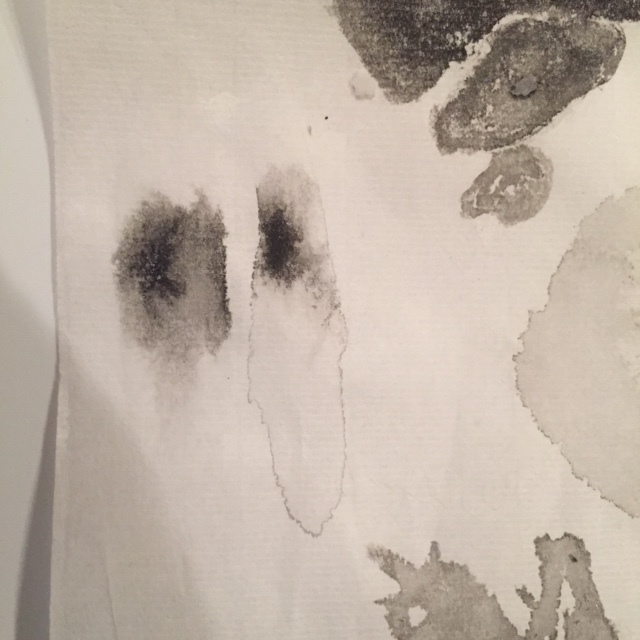
We mixed hide glue with the ink. Normal ink on the left, ink with hide glue on the right. The hide glue prevents the ink from soaking into the page as much, or spreading and blurring. The net effect is that the exact print of the brush stroke is preserved, you get a lot more roughness and directionality. Though I would be remiss if I failed to note that hide glue smells faintly like cat pee, which interferes a little with the serenity of the enterprise.
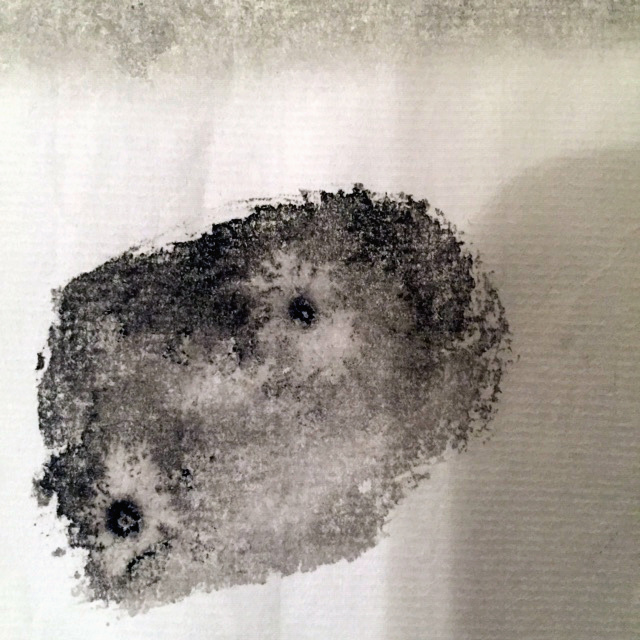
We also worked with salt. Salt osmoses the ink to itself, and makes unpredictable pale dendritic marks if you put it on black ink.
Instead of creating rock planes by crumpling paper and stamping it on the drawing page, we looking at the rock shapes we'd painted, and thoughts about how the planes of the rock should run, and then crumpled the page directly and painted along the ridges. Here's how I crumpled one rock:

And here's how I did her friend:
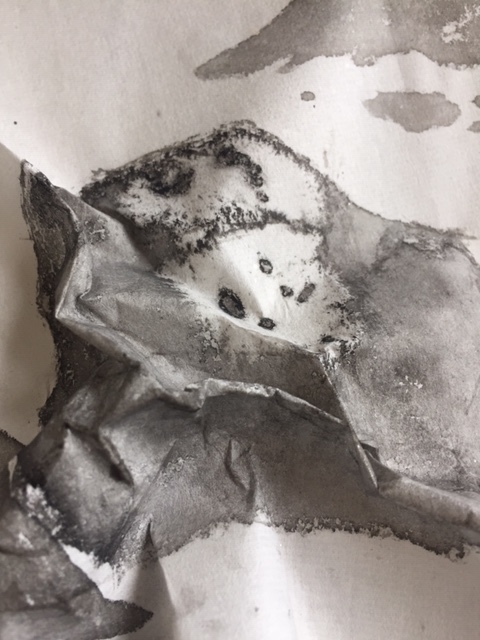
And here they are:
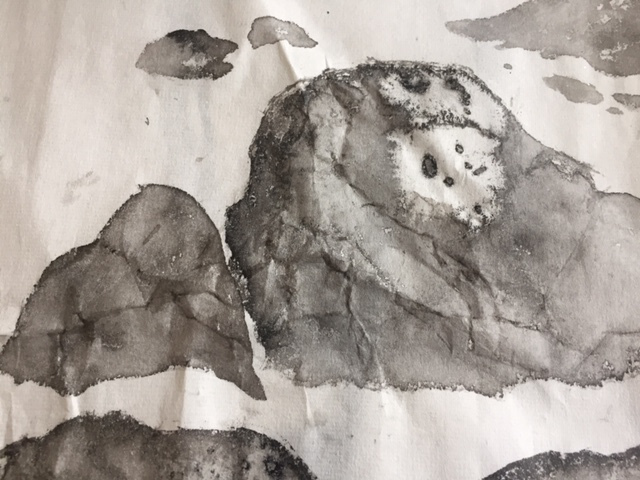
I love how unique the rocks feel. Everyone looks like it has a history of wind and water. Every stone a story.
As much trouble as I had trying to see shapes in the more random crumples, I think it was excellent preparation for this.
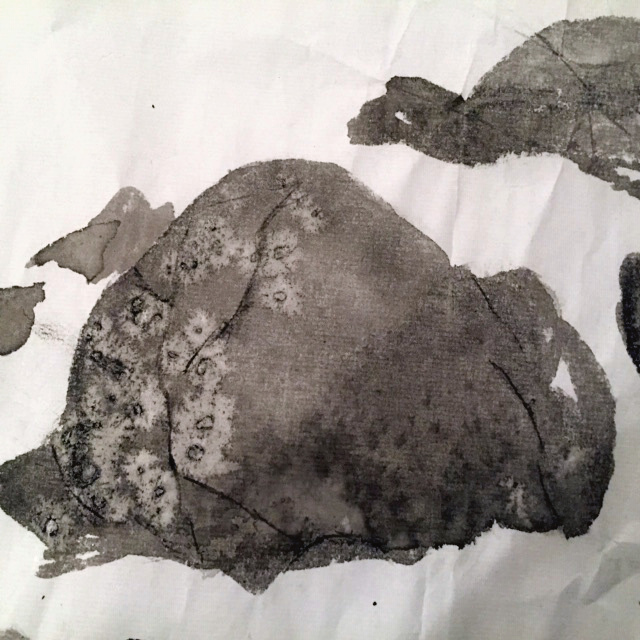
Notes on hide glue:
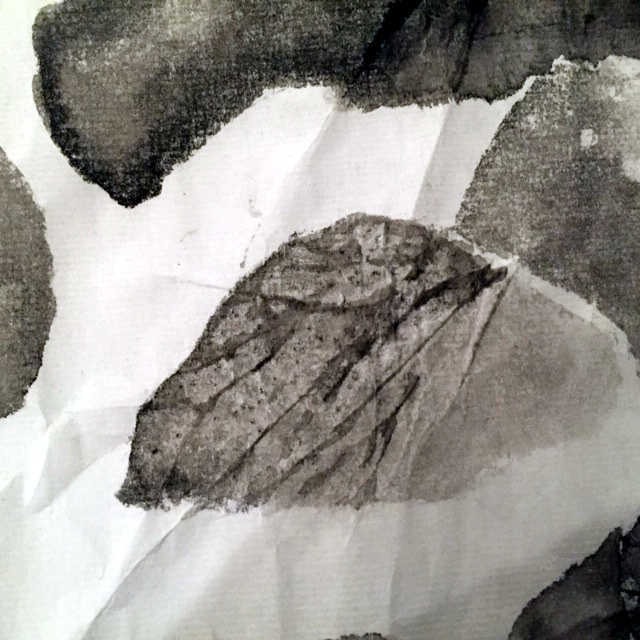
Painting, mostly rocks:
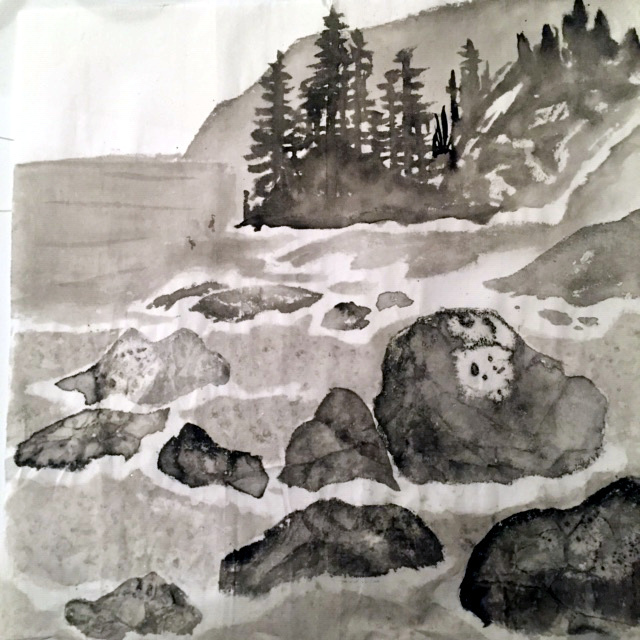
This time, instead of starting with nearly random ink, she taught us techniques that were more like applying random distortions to the ink you meant to put down. It would still do what you wanted ... very approximately.
I loved it. It was like I'd been hiking with a heavy pack for the past two lessons, and now finally I'd gotten to the campsite and had taken it off and was walking unencumbered. Ink only wandering about the page semi-randomly felt almost too easy.

We mixed hide glue with the ink. Normal ink on the left, ink with hide glue on the right. The hide glue prevents the ink from soaking into the page as much, or spreading and blurring. The net effect is that the exact print of the brush stroke is preserved, you get a lot more roughness and directionality. Though I would be remiss if I failed to note that hide glue smells faintly like cat pee, which interferes a little with the serenity of the enterprise.

We also worked with salt. Salt osmoses the ink to itself, and makes unpredictable pale dendritic marks if you put it on black ink.
Instead of creating rock planes by crumpling paper and stamping it on the drawing page, we looking at the rock shapes we'd painted, and thoughts about how the planes of the rock should run, and then crumpled the page directly and painted along the ridges. Here's how I crumpled one rock:

And here's how I did her friend:

And here they are:

I love how unique the rocks feel. Everyone looks like it has a history of wind and water. Every stone a story.
As much trouble as I had trying to see shapes in the more random crumples, I think it was excellent preparation for this.

Notes on hide glue:
- hide glue can be obtained from Lee Valley
- A teaspoon and a half of granules should be soaked in just enough water to cover overnight, then warm water (< 70 degrees C) added to bring the total mount up to a cup. Use in a day or two, otherwise it will go bad.
- (Not addressed: whether hide glue smells better when it goes bad.)
- To above mixture, adding three quarters of a teaspoon of alum will make a mixture than can be used to size rice paper

Painting, mostly rocks:
